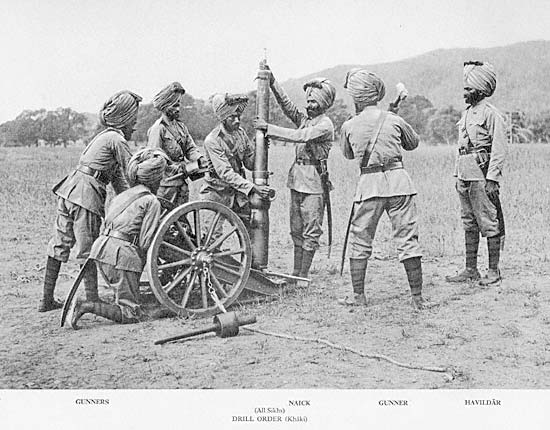|
Indian Antarctic Programme
The Indian Antarctic Programme is a multi-disciplinary, multi-institutional programme under the control of the National Centre for Polar and Ocean Research, Ministry of Earth Sciences, Government of India. It was initiated in 1981 with the first Indian expedition to Antarctica.Walawalkar (2015), Gad (2008) The programme gained global acceptance with India's signing of the Antarctic Treaty and subsequent construction of the Dakshin Gangotri Antarctic research base in 1983, superseded by the Maitri base from 1989. The newest base commissioned in 2012 is Bharati, constructed out of 134 shipping containers. Under the programme, atmospheric, biological, earth, chemical, and medical sciences are studied by India, which has carried out 40 scientific expeditions to the Antarctic. History The origin of the Indian missions to the Antarctic are traced to the joint Indian Space Research Organisation – Hydrometeorological Centre of Russia agreements, which led to Indians, such ... [...More Info...] [...Related Items...] OR: [Wikipedia] [Google] [Baidu] |
COMNAP
Council of Managers of National Antarctic Programs (COMNAP) is an international association that develops and promotes best practice in managing the support of scientific research in Antarctica. Members are composed of national research programs who respective governments are signatories to the Antarctic Treaty committing the continent as a natural reserve. COMNAP members are responsible for the operation of around 80 research stations and the other infrastructure that supports science across Antarctica. Its secretariat is in Christchurch, New Zealand. COMNAP has an observer status and reports its activities at the yearly Antarctic Treaty Consultative Meetings. Activities Through collaboration, members gather research data from all Antarctic regions from terrestrial, marine and atmospheric environments. COMNAP convenes geographic regional break-out groups covering the Peninsula, Ross Sea, East Antarctica, Larsemann Hills, Dronning Maud Land, and High Plateau. Antarctic research ... [...More Info...] [...Related Items...] OR: [Wikipedia] [Google] [Baidu] |
Protocol On Environmental Protection To The Antarctic Treaty
The Protocol on Environmental Protection to the Antarctic Treaty, also known as the Madrid Protocol, is a complementary legal instrument to the Antarctic Treaty signed in Madrid on 4 October 1991. It entered into force on 14 January 1998. The Madrid Protocol designates Antarctica as a "natural reserve, devoted to peace and science" (Art. 2). It complements and reinforces the Antarctic Treaty in order to increase the protection of the Antarctic environment and dependent and associated ecosystems. Signatories As of 2024, the original 26 nations to sign the Madrid Protocol have been joined by a further 16 nations. Of the 42 total signatories, 29 are Consultative Parties to the Antarctic Treaty, and the other 13 are Non-Consultative Parties (see Appendix 1). Main provisions The Protocol consists of a preamble, a main body with 27 articles, an appendix on Arbitration (13 additional articles) and six annexes, the last of which has not yet entered into force. The Protocol's prea ... [...More Info...] [...Related Items...] OR: [Wikipedia] [Google] [Baidu] |
Convention For The Conservation Of Antarctic Marine Living Resources
The Convention on the Conservation of Antarctic Marine Living Resources, also known as the Commission for the Conservation of Antarctic Marine Living Resources, and CCAMLR, is part of the Antarctic Treaty System. The convention was opened for signature on 1 August 1980 and entered into force on 7 April 1982 by the Commission for the Conservation of Antarctic Marine Living Resources, headquartered in Tasmania, Australia. The goal is to preserve marine life and environmental integrity in and near Antarctica. It was established in large part to concerns that an increase in krill catches in the Southern Ocean could have a serious impact on populations of other marine life which are dependent upon krill for food. In 1989, CCAMLR set up the Ecosystem Monitoring Program (CEMP) to further monitor the effects of fishing and harvesting of species in the area. On 19 October 2022, Ecuador became a New Member of the Commission, the 26th member state of the CCAMLR. Member states Ma ... [...More Info...] [...Related Items...] OR: [Wikipedia] [Google] [Baidu] |
Scientific Committee On Antarctic Research
The Scientific Committee on Antarctic Research (SCAR) is an interdisciplinary body of the International Science Council, International Science Council (ISC). SCAR coordinates international scientific research efforts in Antarctica, including the Southern Ocean. SCAR's scientific work is administered through several discipline-themed ''science groups''. The organisation has observer status at, and provides independent advice to Antarctic Treaty System, Antarctic Treaty Consultative Meetings, and also provides information to other international bodies such as the Intergovernmental Panel on Climate Change, Intergovernmental Panel on Climate Change (IPCC) and the United Nations Framework Convention on Climate Change, United Nations Framework Convention on Climate Change (UNFCCC). History At the International Council for Science, International Council of Scientific Unions (ICSU)'s Antarctic meeting held in Stockholm from 9–11 September 1957, it was agreed that a committee should b ... [...More Info...] [...Related Items...] OR: [Wikipedia] [Google] [Baidu] |
Prem Pandey
Prem Chand Pandey is an Indian space scientist, planetary scientist, and academic in the fields of satellite oceanography, remote sensing, atmospheric science, the Antarctic and climate change, and also he is the founding director of the National Centre for Polar and Ocean Research (NCPOR). Education and career Pandey obtained his masters and bachelor's degrees in Electronics and science respectively from Allahabad University. He completed his D.Phil. degree from the same university" Pandey is Proud Past Alumni of Allahabad University" . Pandey is told AU’s Product in Allahabad University Alumni Association web page. (on s) in 1972. In 1966, Pandey became a lecturer in DAV Degree col ... [...More Info...] [...Related Items...] OR: [Wikipedia] [Google] [Baidu] |
Cape Town
Cape Town is the legislature, legislative capital city, capital of South Africa. It is the country's oldest city and the seat of the Parliament of South Africa. Cape Town is the country's List of municipalities in South Africa, second-largest city by population, after Johannesburg, and the largest city in the Western Cape. The city is part of the City of Cape Town metropolitan municipality (South Africa), metropolitan municipality. The city is known for Port of Cape Town, its harbour, its natural setting in the Cape Floristic Region, and for landmarks such as Table Mountain and Cape Point. In 2014, Cape Town was named the best place in the world to visit by ''The New York Times'', and was similarly ranked number one by ''The Daily Telegraph'' in both 2016 and 2023. Located on the shore of Table Bay, the City Bowl area of Cape Town, which contains its Cape Town CBD, central business district (CBD), is History of Cape Town, the oldest urban area in the Western Cape, with a signi ... [...More Info...] [...Related Items...] OR: [Wikipedia] [Google] [Baidu] |
Indian Armed Forces
The Indian Armed Forces are the armed forces, military forces of the India, Republic of India. It consists of three professional uniformed services: the Indian Army, the Indian Navy, and the Indian Air Force.—— Additionally, the Indian Armed Forces are supported by the Central Armed Police Forces, the Indian Coast Guard, and the Special Frontier Force and various Jointness and integration in the Indian military, inter-service commands and institutions such as the Strategic Forces Command, the Andaman and Nicobar Command, and the Integrated Defence Staff. The President of India is the Commander-in-Chief, Supreme Commander of the Indian Armed Forces but the executive authority and responsibility for national security is vested in the Prime Minister of India and their chosen Cabinet Committee on Security, Cabinet Ministers. The Indian Armed Forces are under the management of the Ministry of Defence (India), Ministry of Defence of the Government of India. With strength of over ... [...More Info...] [...Related Items...] OR: [Wikipedia] [Google] [Baidu] |
Himalayas
The Himalayas, or Himalaya ( ), is a mountain range in Asia, separating the plains of the Indian subcontinent from the Tibetan Plateau. The range has some of the Earth's highest peaks, including the highest, Mount Everest. More than list of highest mountains on Earth, 100 peaks exceeding elevations of above sea level lie in the Himalayas. The Himalayas abut on or cross territories of Himalayan states, six countries: Nepal, China, Pakistan, Bhutan, India and Afghanistan. The sovereignty of the range in the Kashmir region is disputed among India, Pakistan, and China. The Himalayan range is bordered on the northwest by the Karakoram and Hindu Kush ranges, on the north by the Tibetan Plateau, and on the south by the Indo-Gangetic Plain. Some of the world's major rivers, the Indus River, Indus, the Ganges river, Ganges, and the Yarlung Tsangpo River, Tsangpo–Brahmaputra River, Brahmaputra, rise in the vicinity of the Himalayas, and their combined drainage basin is home to some 6 ... [...More Info...] [...Related Items...] OR: [Wikipedia] [Google] [Baidu] |
Research And Development
Research and development (R&D or R+D), known in some countries as OKB, experiment and design, is the set of innovative activities undertaken by corporations or governments in developing new services or products. R&D constitutes the first stage of development of a potential new service or the production process. Although R&D activities may differ across businesses, the primary goal of an R&D department is to new product development, develop new products and services. R&D differs from the vast majority of corporate activities in that it is not intended to yield immediate profit, and generally carries greater risk and an uncertain return on investment. R&D is crucial for acquiring larger shares of the market through new products. ''R&D&I'' represents R&D with innovation. Background New product design and development is often a crucial factor in the survival of a company. In a global industrial landscape that is changing fast, firms must continually revise their design and range of ... [...More Info...] [...Related Items...] OR: [Wikipedia] [Google] [Baidu] |





